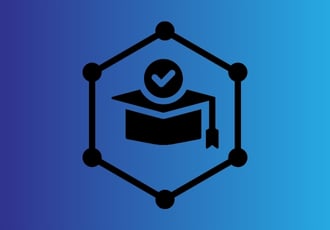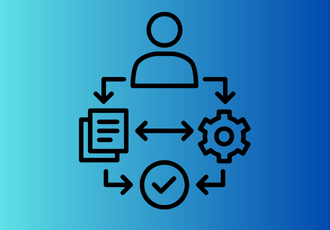Contract renewals are a critical but often overlooked part of business operations. Missed software license renewals, unreviewed SLAs, or auto-renewed licenses can impact compliance, increase spend, and weaken vendor relationships.
With growing pressure on finance, procurement, and IT leaders to reduce costs and gain visibility, renewal management software has become essential.
These tools help businesses streamline the entire renewal lifecycle — from automated reminders and approval workflows to documentation, audits, and compliance reporting.
In this guide, we’ve reviewed the top software for renewal management in 2025. Whether you're managing hundreds of client subscriptions, internal contracts, or multi-step workflows, you’ll find the best renewal management solutions for your needs — including FlowForma, a no-code tool built specifically for regulated, complex processes.
What is Renewal Management Software?

All you need to know about renewal management software
Renewal management software solutions automate the end-to-end renewal process, providing alerts, centralised documentation, and insight into usage and spend. They allow businesses to negotiate better terms, cut out unused subscriptions, and maintain stronger vendor governance.
Effective contract renewal management also helps mitigate legal and operational risk. By giving teams visibility into renewal dates, contract obligations, and usage data, these platforms improve decision-making, drive cost savings, and help avoid last-minute bottlenecks.
8 Key Features to Consider in a Renewal Management Software
A robust renewal management platform should go beyond simple reminders. It should bring structure, visibility, and intelligence to contract renewals across your organisation.
 Key features to look for in renewal management software
Key features to look for in renewal management software
Here are the key capabilities to prioritise:
- Automated workflows: Trigger review, approval, and renewal cycles based on pre-set rules, reducing manual follow-ups and bottlenecks.
- Integration capabilities: Connect seamlessly with Microsoft 365, CRMs (like Hubspot), ERPs, and document storage platforms.
- Contract insights: Clearly display contract terms, renewal dates, dependencies, and performance metrics.
- Software usage analytics: Highlights how often tools are used so you can reduce waste or renegotiate terms.
- Centralised document repository: Store all contracts, notes, and renewals in one place with easy access and version tracking.
- Security and compliance: Look for role-based access control, audit logs, and support for frameworks like GDPR, DORA, or ISO27001.
- Scalability and customisation: The platform should be able to handle complex workflows and adapt to organisational needs over time.
- User support and training: Ensure there’s dedicated support, onboarding resources, and documentation to encourage adoption.
10 Best Renewal Management Solutions in 2025
Here’s a quick overview of the 10 best renewal management tools, their AI capabilities, pricing, and key strengths.
|
Tool |
AI Features |
Pricing |
Best For |
|
FlowForma |
Yes (Copilot, Agentic AI) |
Transparent, process-based |
No-code automation in regulated, multi-step workflows |
|
Creatio |
Yes |
User-based pricing |
Workflow-heavy CRMs with strong contract lifecycle needs |
|
Flowable |
Partial (ML) |
Open-source/Custom |
Developers needing full process orchestration |
|
Appian |
Yes |
Enterprise |
End-to-end automation at scale |
|
Nintex |
Yes |
Enterprise |
Document-centric approval workflows |
|
Power Apps + Automate |
Yes |
Microsoft-based |
O365-centric custom builds |
|
Conga Contracts |
Yes |
Tiered |
Legal, sales, and procurement teams managing renewals |
|
Bizagi |
No |
Tiered |
Teams seeking cross-functional visual workflow modelling |
|
ProcessMaker |
Limited |
Custom |
Role-based task assignments in regulated environments |
|
Cobblestone Software |
Yes |
Enterprise |
Enterprise contract + vendor lifecycle management |
Top renewal management software in 2025
Now that we’ve taken a quick look at the best renewal management software tools, let us analyse each solution in detail.
1. FlowForma

FlowForma’s homepage
FlowForma is an all-in-one digital process automation tool that combines forms, workflows, document generation, analytics, and AI. It is designed for business users rather than developers, allowing organisations to rapidly automate renewal processes without needing IT support.
With Microsoft 365 integration, audit trails, and AI-powered workflow creation, it’s ideal for regulated industries needing fast, compliant automation without relying on developers or IT support.
FlowForma Key Features
-
AI Copilot for workflow creation
AI Copilot enables business users to build and modify renewal workflows simply by describing the process in plain language.
For example, a contract manager can say, “Create a complete workflow for client insurance renewal with a 90-day pre-expiry reminder, review stage, and approval sign-off,” and Copilot will generate the full process.
This reduces build time, eliminates technical barriers, and ensures the renewal workflow includes all critical steps — from notifications to compliance checks — without needing coding expertise.
Watch this interactive demo to see how FlowForma Copilot can automate the insurance renewal process in minutes.
2. Agentic AI for data and decisions
FlowForma’s Agentic AI automatically pulls key data from contracts, such as renewal dates, terms, and SLAs, and inputs it directly into the renewal workflow.
It can validate that all necessary compliance documents are attached before proceeding, or prompt approvers with context-specific decisions (e.g., whether to renew, renegotiate, or terminate). This is especially useful in insurance or vendor renewals where precise contract data and timelines are critical.
Learn more about leveraging Agentic and FlowForma AI Copilot in our AI masterclass.
 FlowForma’s AI Masterclass
FlowForma’s AI Masterclass
3. No-code configuration
FlowForma’s no-code interface empowers contract managers, procurement teams, and operations staff to configure and adapt workflows themselves.

Caption: Advantages of no-code
In a contract lifecycle, this means quickly adding new approval steps, modifying timelines, or integrating vendor performance review stages without waiting on IT.
4. Automated document generation
Within the renewal process, the platform can automatically generate updated contracts, SLAs, and supporting documents using predefined templates.

Speed up contract turnarounds with FlowForma’s automated document generation
For example, once a renewal is approved, the system can create a new SLA document populated with client-specific data, ready for e-signature. This reduces manual document creation, speeds up contract turnaround, and ensures all documents remain consistent and compliant.
5. Audit trails and compliance checks
Every step of the renewal process is recorded, creating a complete audit trail. This is essential for regulated sectors like finance and insurance, where proof of due diligence is mandatory.

Benefits of compliance
Compliance checks can be embedded into the workflow — for instance, verifying that all regulatory documents are attached before moving to the approval stage — ensuring renewals are always audit-ready. This helps companies adhere to regulations like DORA, GDPR, and ISO.
6. Microsoft 365 integration
Integration with Microsoft 365 tools means all contract documents can be stored in SharePoint, notifications can be sent via Teams, and renewal reminders can sync with Outlook calendars.
.png?width=602&height=452&name=FlowForma%20ai%20integration%20image%20(2).png)
FlowForma integrations
This keeps all stakeholders informed about the tools they already use and ensures contract data remains secure within the organisation’s existing infrastructure
FlowForma Pros
- Fast implementation, no IT reliance
- Prebuilt templates and a user-friendly workflow builder
- Transparent, process-based pricing model
- Suitable for compliance-heavy processes
FlowForma Cons
- Requires SharePoint Online
FlowForma Pricing
FlowForma follows a transparent, tiered, process-based pricing. This approach ensures predictable costs and allows mid-sized and large companies to scale their usage of FlowForma's features as their needs grow, without facing hidden fees or unexpected charges.
Read more about the pricing information here.
Case study in focus: How Aon automated its renewal management processes
Leading insurance company Aon’s renewal processes were hindered by inconsistent methods, reliance on manual tools like email and Excel, and a lack of centralised audit trails, causing inefficiency and compliance risks.
By adopting FlowForma Process Automation, Aon standardised workflows, centralised contract data, and ensured compliance with automated, trackable processes.
With no-code configuration and Microsoft 365 integration, Aon reduced build times from months to days, improved collaboration, and ensured visibility for all renewal steps, enhancing decision-making and compliance for both ongoing and upcoming renewals.
Watch the entire webinar to learn more.
 Aon Case Study Webinar
Aon Case Study Webinar
1. Creatio

Creatio homepage
Creatio is a business process automation and CRM platform that enables users to design and manage complex, multi-step workflows across departments. It connects customer data with automated triggers, allowing renewal workflows to respond to account changes. Features include custom forms, approval chains, deadline automation, and AI-powered scoring to help manage contracts, SLAs, and subscription renewals more effectively.
Creatio Key Features
- Visual process modeller for drag-and-drop workflow design
- SLA tracking with real-time dashboards and reporting
- AI-based scoring and trigger suggestions
- Custom form builder for contract and renewal inputs
- Cross-departmental workflow orchestration
Creatio Pros
- Combines CRM and process automation
- AI-enhanced workflow routing
- Automated alerts, reminders, and escalation notifications
Creatio Cons
- Pricing varies significantly with configuration
- Steeper learning curve for smaller teams
2. Flowable
Flowable is an open-source BPMN-based process automation platform that allows organisations to model and execute business workflows. It supports complex logic, event handling, and multi-party approvals.
 Flowable homepage
Flowable homepage
Flowable is known for its flexibility and developer-oriented tools, offering integration via APIs and microservices. Its support for BPMN, CMMN, and DMN standards makes it a fit for organisations building custom workflow orchestration from the ground up.
Flowable Key Features
- BPMN/CMMN/DMN standards support
- Event-based workflow triggers
- Integration via APIs
- Custom UI options for web and mobile
- Microservices-friendly architecture
Flowable Pros
- Highly configurable for development teams
- Standards-based modelling
- Flexible deployment
Flowable Cons
- Not built for non-technical users
- Requires in-house development capacity
3. Appian
Appian is an enterprise-grade low-code platform focused on high-volume, mission-critical workflows. It includes native AI capabilities, a visual process builder, and tools for real-time reporting and governance.

Appian homepage
Appian allows organisations to design and automate complex workflows, including contract lifecycle and renewal tasks. Its architecture supports integration with third-party systems and cloud infrastructure, with features suited to regulated environments.
Appian Key Features
- Low-code, visual workflow builder
- AI-driven predictions and smart routing
- SLA tracking and escalation
- Role-based access controls
- Mobile deployment options
Appian Pros
- Enterprise-grade capabilities
- Advanced governance features
- Flexible integration options
Appian Cons
- Requires significant upfront planning
- Enterprise pricing
4. Nintex
Nintex offers tools for automating document-heavy workflows, particularly those requiring approvals, document generation, and regulatory tracking.
Nintex homepage
Its platform includes integration with SharePoint and other Microsoft 365 tools, with capabilities for e-signatures, workflow routing, and audit trails. Nintex is often used to replace manual or email-based approval chains, including for renewal contracts.
Nintex Key Features
- Document automation and e-signature integration
- Workflow routing and version control
- SharePoint and O365 integrations
- Compliance reporting and logs
- Prebuilt connectors and templates
Nintex Pros
- Strong document lifecycle tools
- Integration with the Microsoft ecosystem
- Customisable process templates
Nintex Cons
- Advanced features are locked behind higher-tier pricing
- Less flexible outside of Microsoft environments
5. Power Apps + Automate
Microsoft Power Apps and Power Automate are part of the Microsoft Power Platform. They offer tools for building custom applications and automating workflows using prebuilt connectors. Together, they allow organisations to create tailored renewal workflows linked to Microsoft 365 and third-party systems.
Microsoft’s Power Platform
Power Automate supports process triggers, while Power Apps enables the creation of forms and interfaces for approvals or submissions.
MS Power Platform Features
- Custom app builder via Power Apps
- Workflow automation with Power Automate
- Integration with Microsoft tools and third-party APIs
- AI Builder for simple predictive logic
- SharePoint and Outlook triggers
MS Power Platform Pros
- Seamless Microsoft 365 integration
- Powerful for technical teams
- Flexible API support
- Supports custom app building
MS Power Platform Cons
- Requires developer knowledge for complex flows
- Audit trails and document generation must be configured manually
6. Conga
Conga provides contract lifecycle management capabilities, including renewal workflows. It offers clause libraries, document tracking, and approval chains.

Conga’s contract lifecycle management page
Its platform supports electronic signatures, legal negotiation workflows, and obligation tracking. Conga also integrates with Salesforce and other CRMs for automated renewal notices.
Conga Key Features
- Centralised contract repository
- Clause and obligation management
- Renewal alerts and tracking
- E-signature and legal workflow support
- Integration with CRM platforms
Conga Pros
- Designed for contract-intensive organisations
- Document version control and negotiation tools
- Automated renewals linked to CRM
Conga Cons
- Salesforce-centric configuration may be a disadvantage for teams that operate outside this environment
- Legal onboarding is often required
7. Bizagi
Bizagi offers a visual process automation platform with a drag-and-drop modeller, allowing teams to build workflows including renewals.

Bizagi’s homepage
It supports integrations with enterprise tools like SAP and Salesforce, and includes collaboration features for cross-functional teams. Its cloud deployment and business rule engine enable a range of use cases.
Bizagi Key Features
- Workflow modeller and rule engine
- Form creation and automation triggers
- Enterprise system integrations
- KPI tracking dashboards
- Deployment on cloud or on-premise
Bizagi Pros
- Visual-first modelling environment
- Strong integration support
- Multi-language interface
Bizagi Cons
- AI functionality is limited
- Pricing scales with features
8. ProcessMaker
ProcessMaker enables organisations to model and automate internal approval workflows. It offers tools for process mapping, task delegation, and rule-based routing.

ProcessMaker Homepage
Its user interface allows creation of structured renewal workflows that rely on user roles and conditional logic. While less focused on AI, it supports scripting and data connectors.
ProcessMaker Key Features
- BPMN 2.0 workflow design
- Form builder and approval routing
- REST API and data connectors
- Scriptable process steps
- On-premise or cloud deployment
ProcessMaker Pros
- Supports structured internal approvals
- Developer-friendly configuration
- In-built compliance features
ProcessMaker Cons
- Limited AI capabilities
- Requires technical configuration for advanced logic
9. Cobblestone Software
Cobblestone Software provides contract lifecycle management solutions, including milestone-based renewal tracking and vendor collaboration. Its features include clause tracking, workflow automation, and audit trails for compliance.

Cobblestone Software homepage
Designed for enterprise use, it offers a central repository for contract metadata and associated workflows.
Cobblestone Software Key Features
- Centralised repository for contracts and renewals
- Automated alerts and milestones
- Vendor and stakeholder collaboration
- Workflow templates
- Role-based permissions and reporting
Cobblestone Software Pros
- Focus on enterprise-level contract lifecycle management
- In-depth metadata tracking
- Built-in compliance controls
Cobblestone Software Cons
- Interface is less modern than its peers
- Enterprise-only pricing model
Why FlowForma is the Top Choice for Renewal Management Process
Renewals don’t have to be a reactive or risky process. The right software not only prevents missed deadlines — it helps you run more efficient operations, meet compliance standards, and deliver better experiences for customers, staff, and partners.
While all the tools in this list offer value, FlowForma stands apart by combining:
- No-code simplicity with powerful automation
- AI Copilot and Agentic AI to accelerate workflow creation
- Built-in compliance controls for regulated industries
- Transparent pricing with no hidden costs
- Fast deployment — with most users going live in under 30 days

A testimonial from one of FlowForma's customers, AON
Whether you’re in insurance, healthcare, or any sector managing complex agreements, FlowForma is one of the best renewal management software tools available today. Book a demo today to see the tool in action!
.png) By
By 






